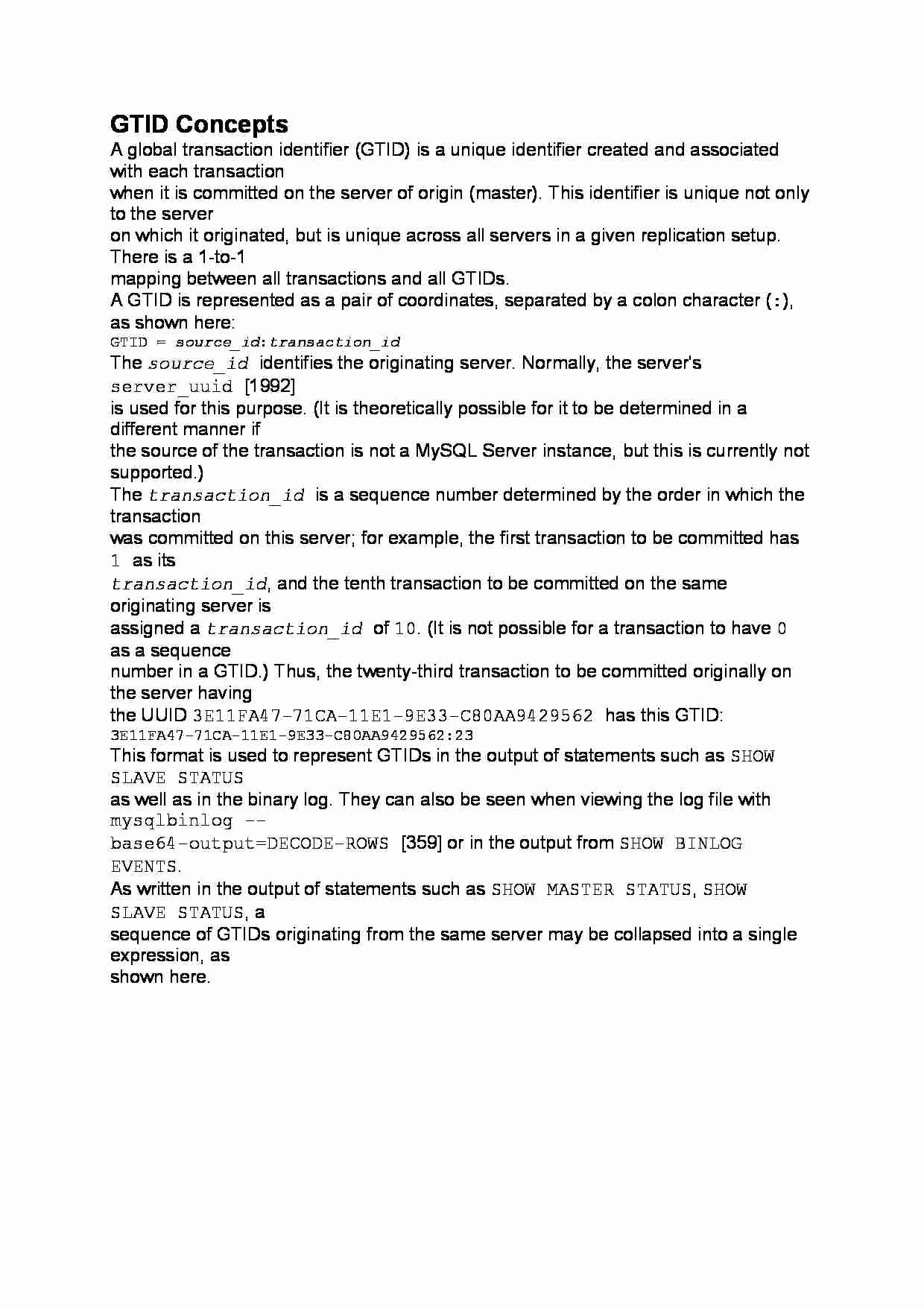
GTID Concepts
A global transaction identifier (GTID) is a unique identifier created and associated with each transaction
when it is committed on the server of origin (master). This identifier is unique not only to the server
on which it originated, but is unique across all servers in a given replication setup. There is a 1-to-1
mapping between all transactions and all GTIDs.
A GTID is represented as a pair of coordinates, separated by a colon character (:), as shown here:
GTID = source_id:transaction_id
The source_id identifies the originating server. Normally, the server's server_uuid [1992]
is used for this purpose. (It is theoretically possible for it to be determined in a different manner if
the source of the transaction is not a MySQL Server instance, but this is currently not supported.)
The transaction_id is a sequence number determined by the order in which the transaction
was committed on this server; for example, the first transaction to be committed has 1 as its
transaction_id, and the tenth transaction to be committed on the same originating server is
assigned a transaction_id of 10. (It is not possible for a transaction to have 0 as a sequence
number in a GTID.) Thus, the twenty-third transaction to be committed originally on the server having
the UUID 3E11FA47-71CA-11E1-9E33-C80AA9429562 has this GTID:
3E11FA47-71CA-11E1-9E33-C80AA9429562:23
This format is used to represent GTIDs in the output of statements such as SHOW SLAVE STATUS
as well as in the binary log. They can also be seen when viewing the log file with mysqlbinlog --
base64-output=DECODE-ROWS [359] or in the output from SHOW BINLOG EVENTS.
As written in the output of statements such as SHOW MASTER STATUS, SHOW SLAVE STATUS, a
sequence of GTIDs originating from the same server may be collapsed into a single expression, as
shown here.
... zobacz całą notatkę



Komentarze użytkowników (0)